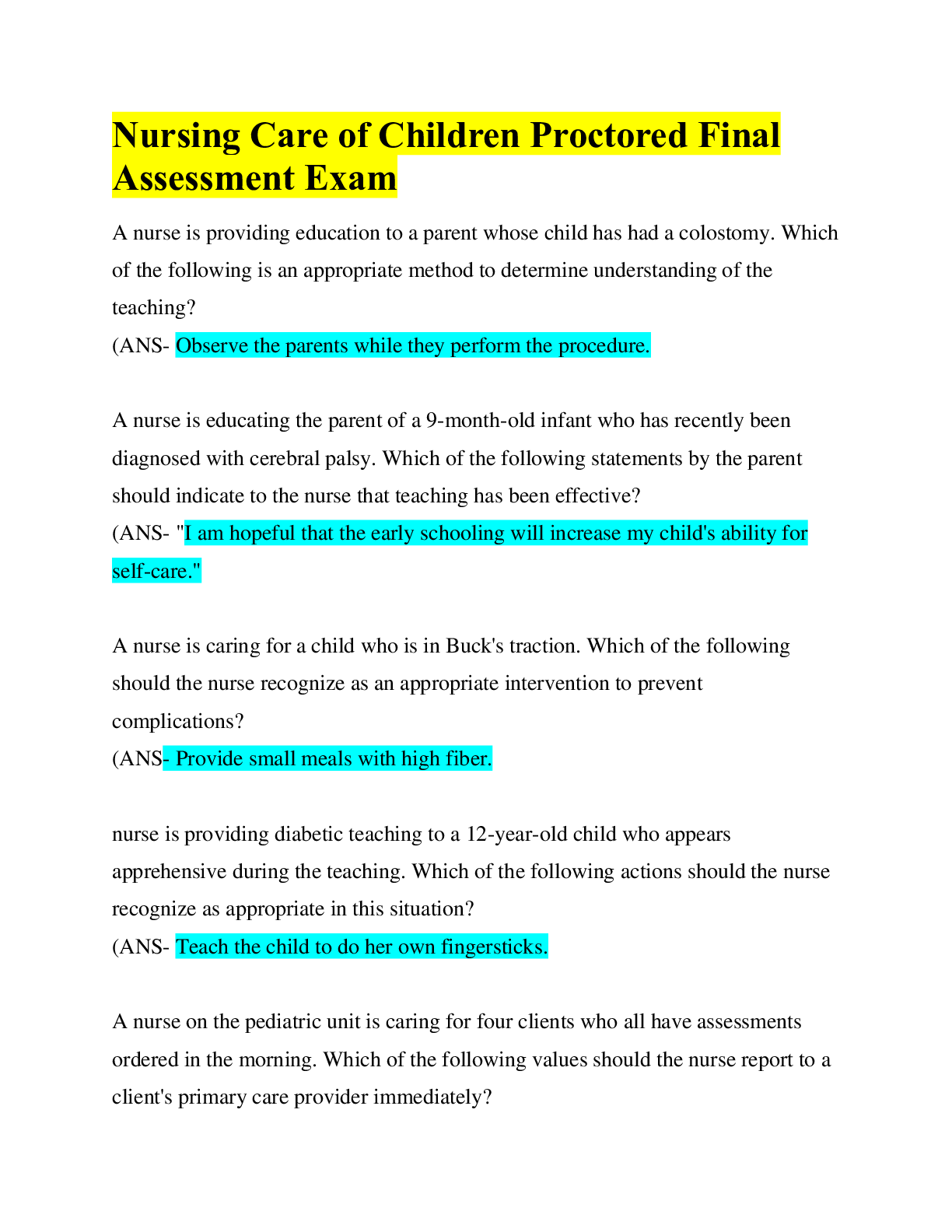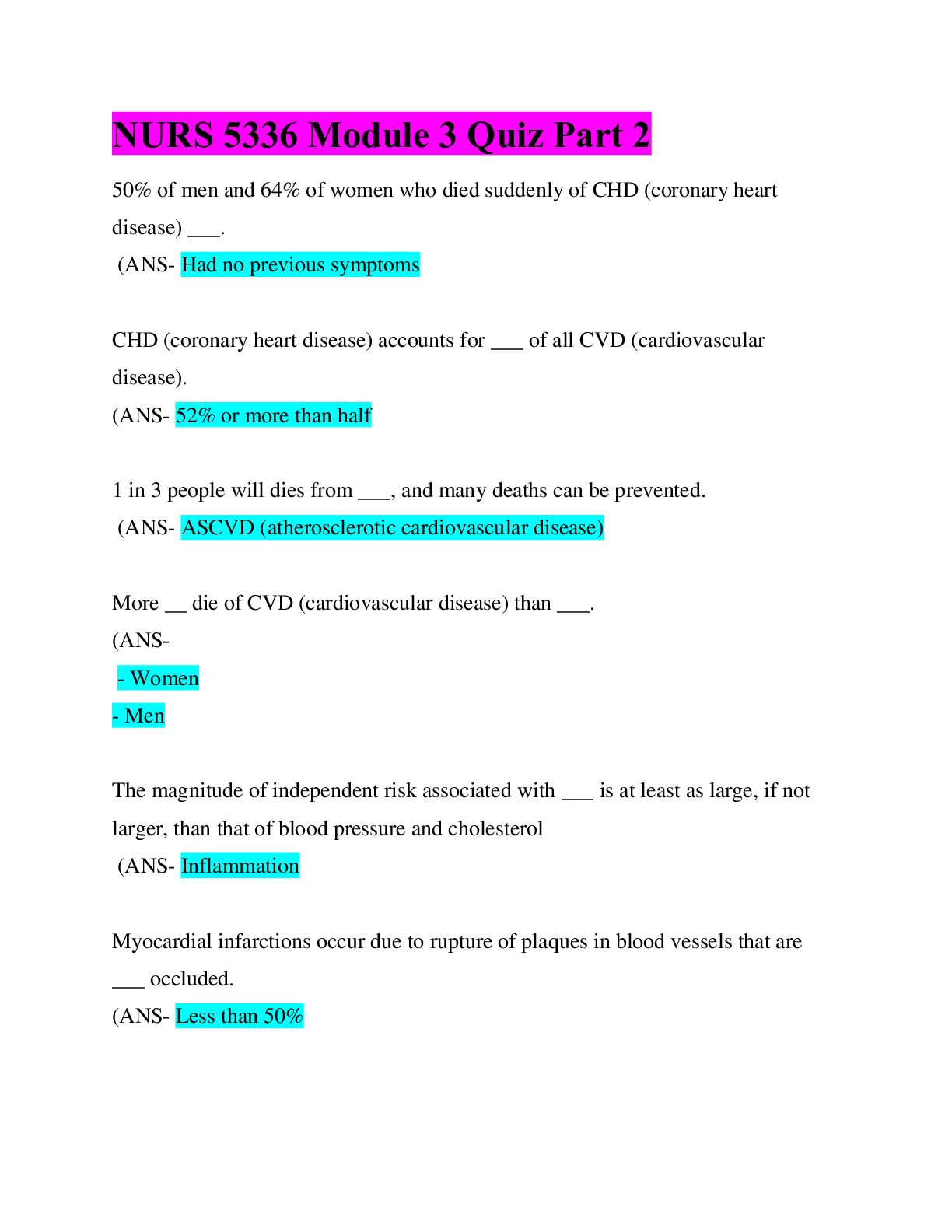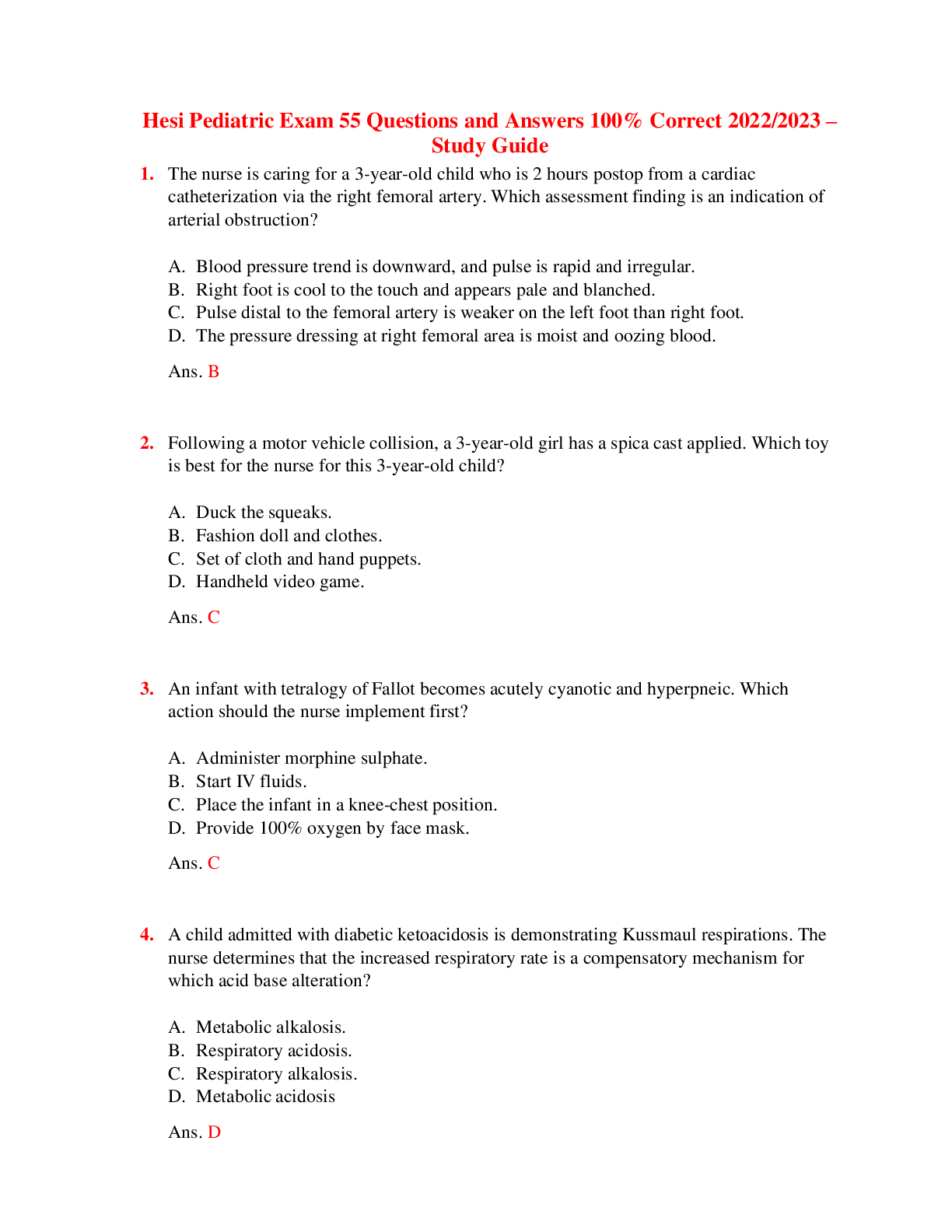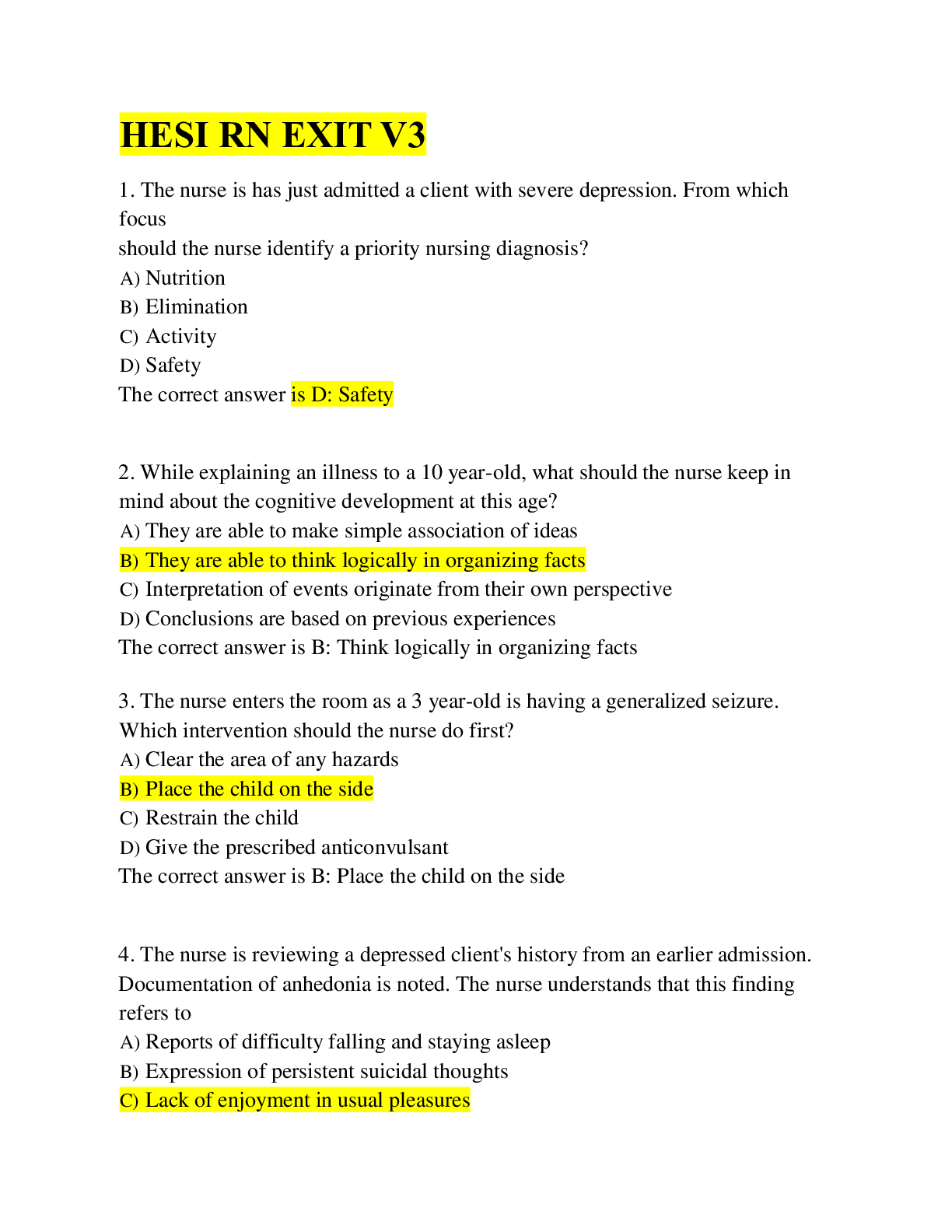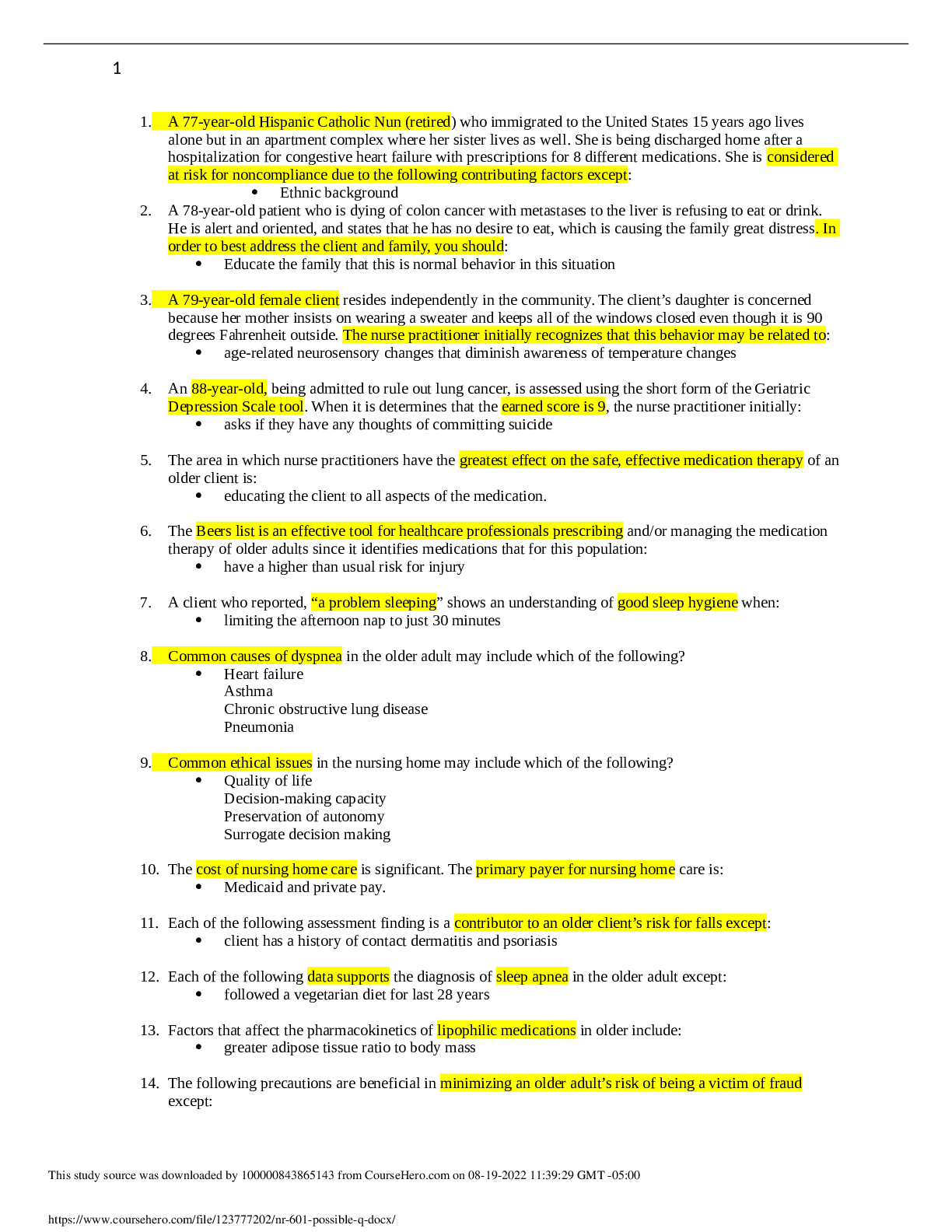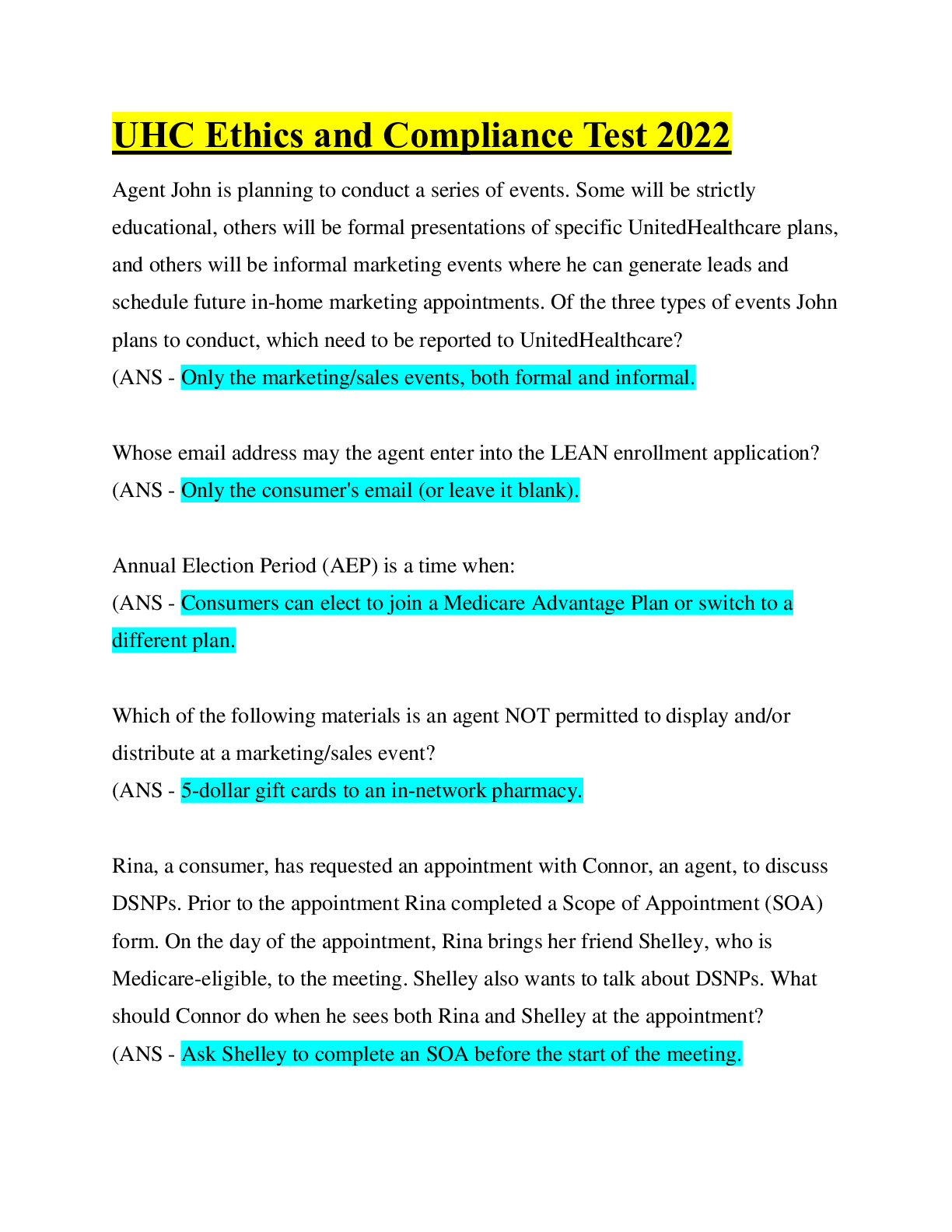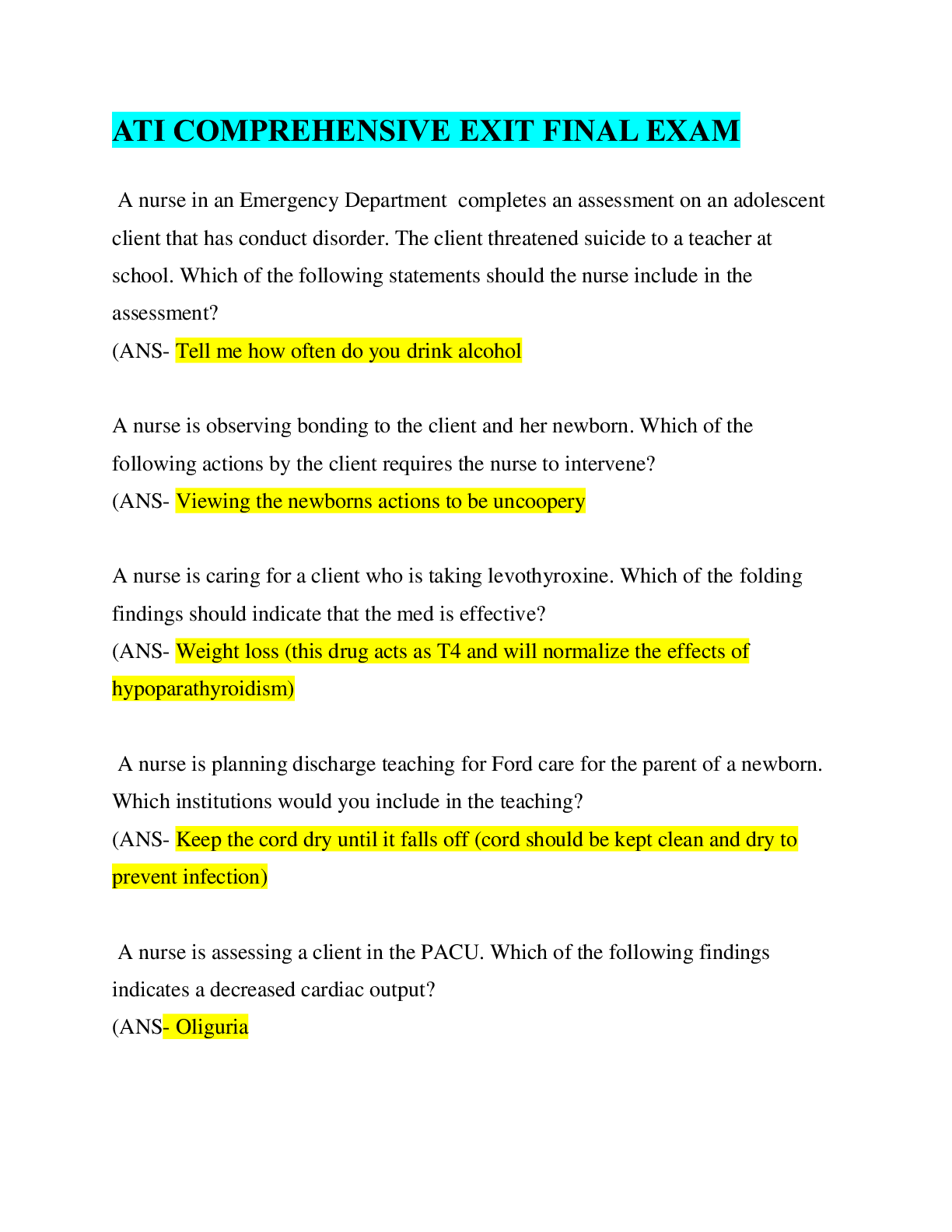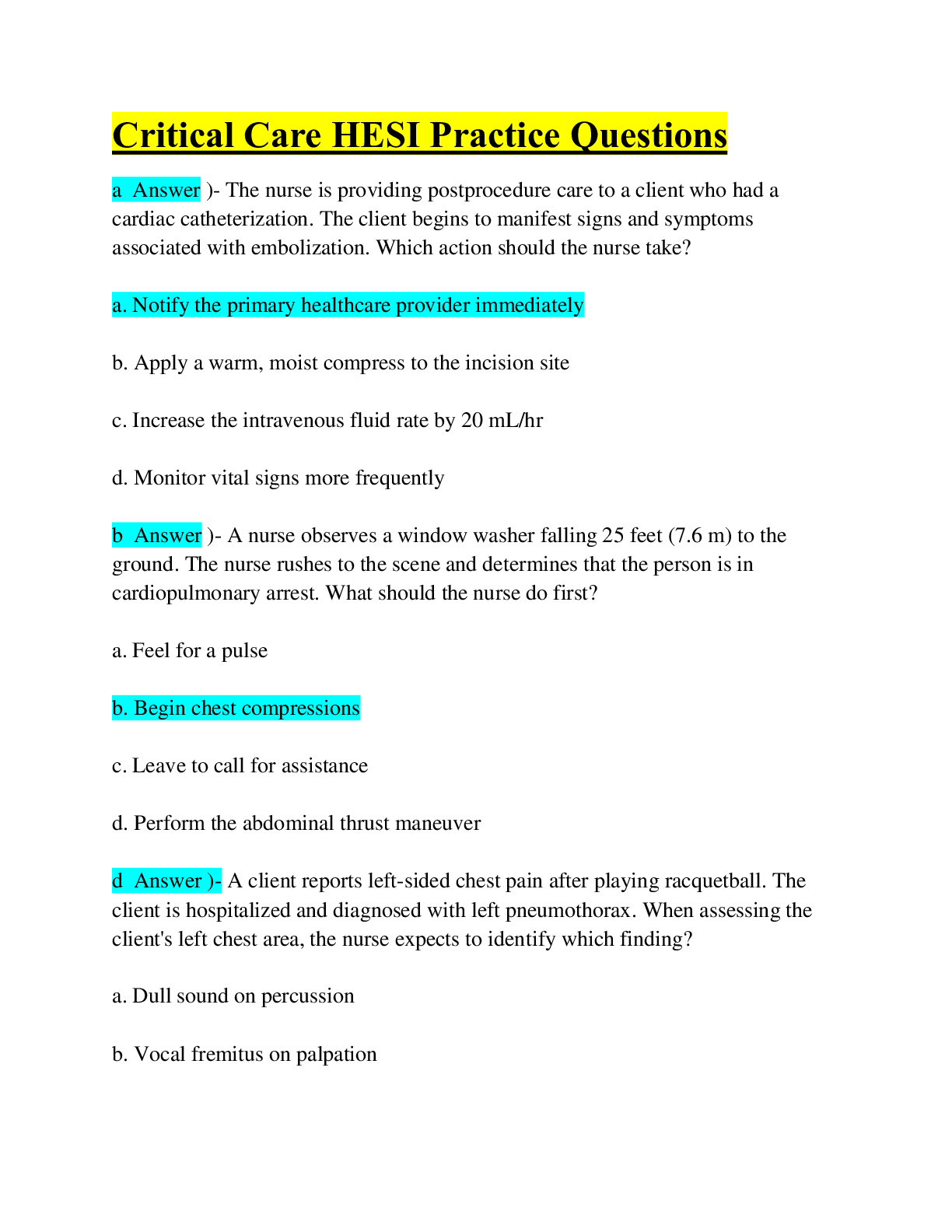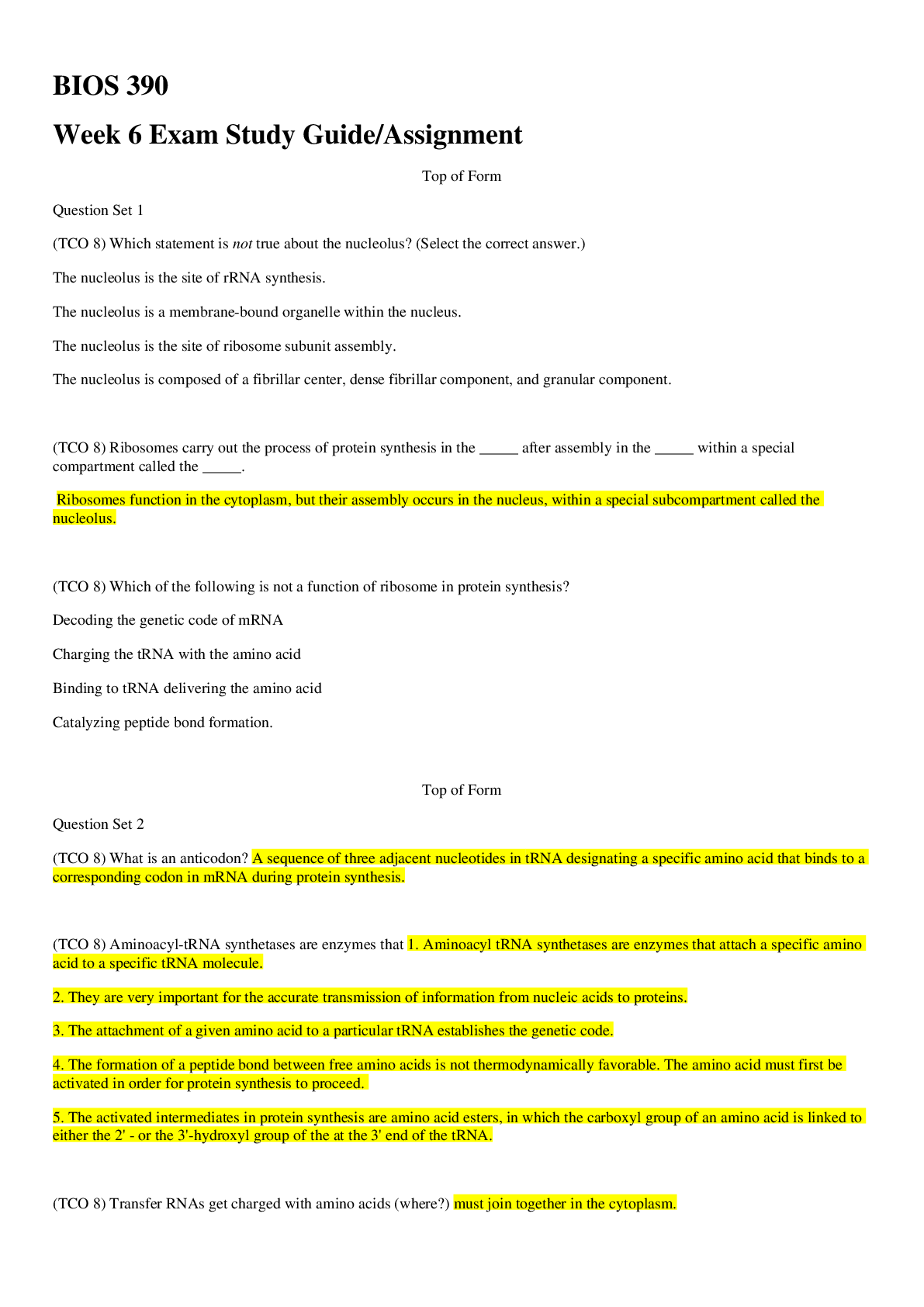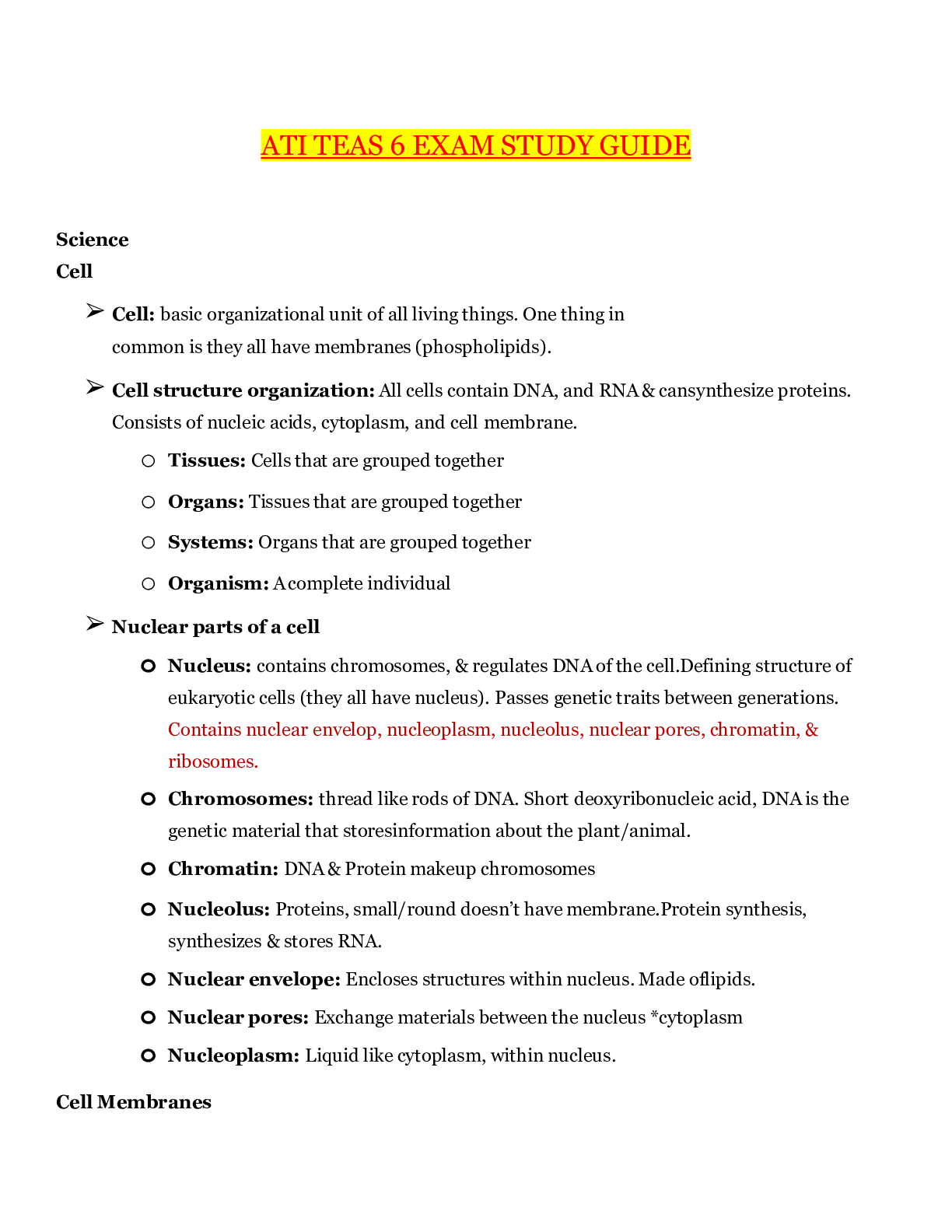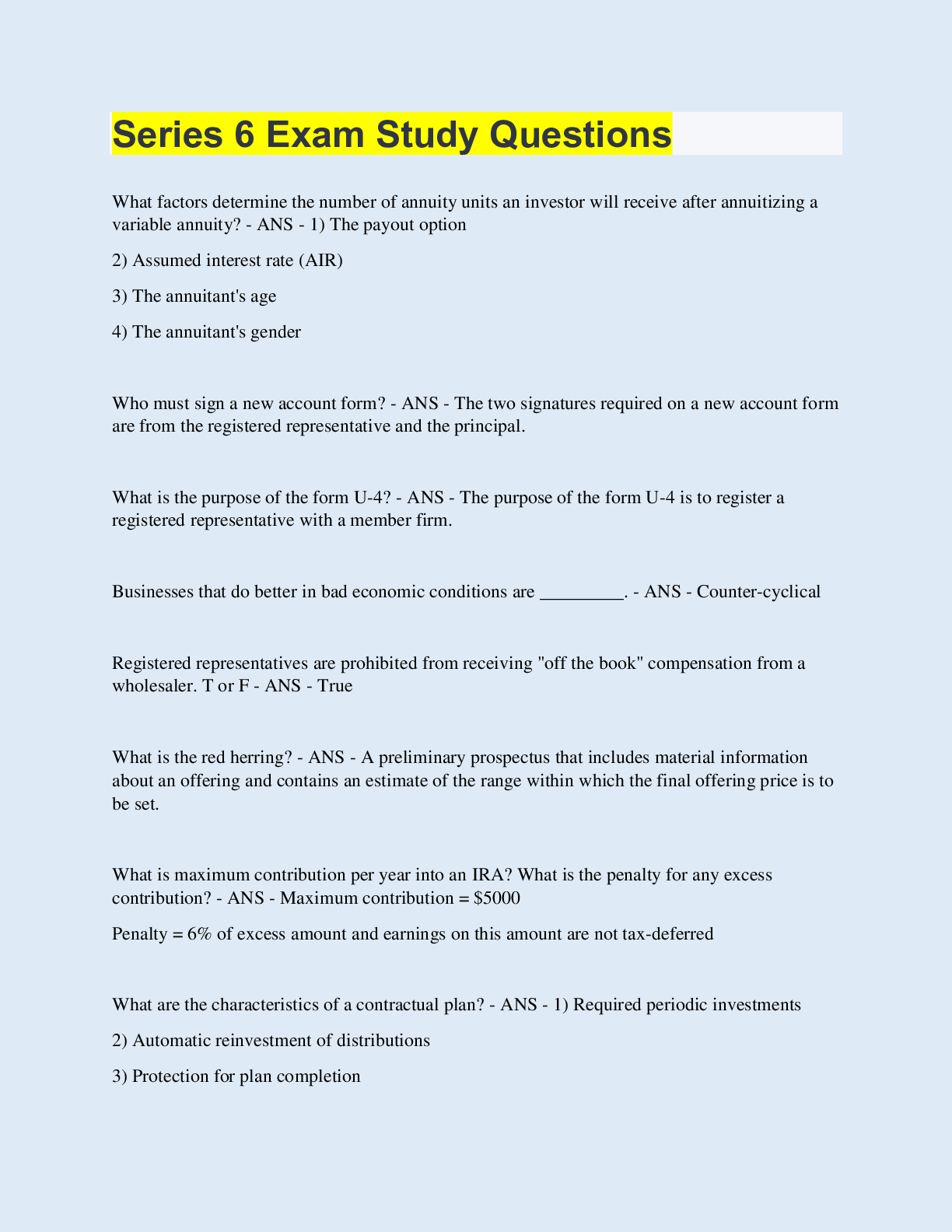Health Care > EXAM > EMT Module 6 Exam Study Guide:Questions & Answers: Aplus Guide (All)
EMT Module 6 Exam Study Guide:Questions & Answers: Aplus Guide
Document Content and Description Below
List the amount of blood that is considered significant if lost in infants/children/adults. (Ans - infants-150CC; children-500CC; adults-1000CC What is the most common cause of shock in trauma pat... ients? (Ans - Hemorrhage Describe the appearance of blood from a venous bleed. (Ans - Dark red/Maroon and has a steady flow What is the most common and effective way to control external bleeding? (Ans - Direct Pressure The type of shock most commonly seen by EMT's. (Ans - Hypovolemic Shock Nose bleeds are also called____ and are frequently caused by ____, ____ ____, and ____ ____. (Ans - epistaxix, hypertension, sinus infection and digital trauma what is the leading cause of internal bleeding? (Ans - Blunt Force Trauma what is the goal of the treatment of internal bleeding? (Ans - Prevention and treatment of shock Describe the categories of severity in regards to shock. (Ans - COMPENSATED SHOCK: body compensates by increasing pulse/respiratory rate; Normal blood pressure; cool, pale, clammy skin. DECOMPENSATED SHOCK: body cannot compensate any more showing hypotension. IRREVERSIBLE SHOCK: cell damage has occurred in which the patient my die due to failure of irreparable organs. You arrive to a scene of a stabbing and find an improvised tourniquet has been placed by a bystander. What should you do in regards to bleeding control to the wound? (Ans - Have partner apply direct pressure; remove tourniquet, check to see if it is necessary. If not, apply direct pressure and transport. If necessary, continue direct pressure and apply tourniquet. what are the major functions of the skin? (Ans - Protection, Water Balance, Temperature Regulation, Excretion and Shock Absorption. True or False. The epidermis does not contain any blood or nerve vessels? (Ans - TRUE Up to how much blood may accumulate in a hematoma? (Ans - 1 Liter Name as many open wound classifications as you can. (Ans - Abrasions, lacerations, punctures/penetrations, avulsions, amputations, open crush injuries, blast injuries, high pressure injections injuries. [Show More]
Last updated: 11 months ago
Preview 1 out of 13 pages
Instant download
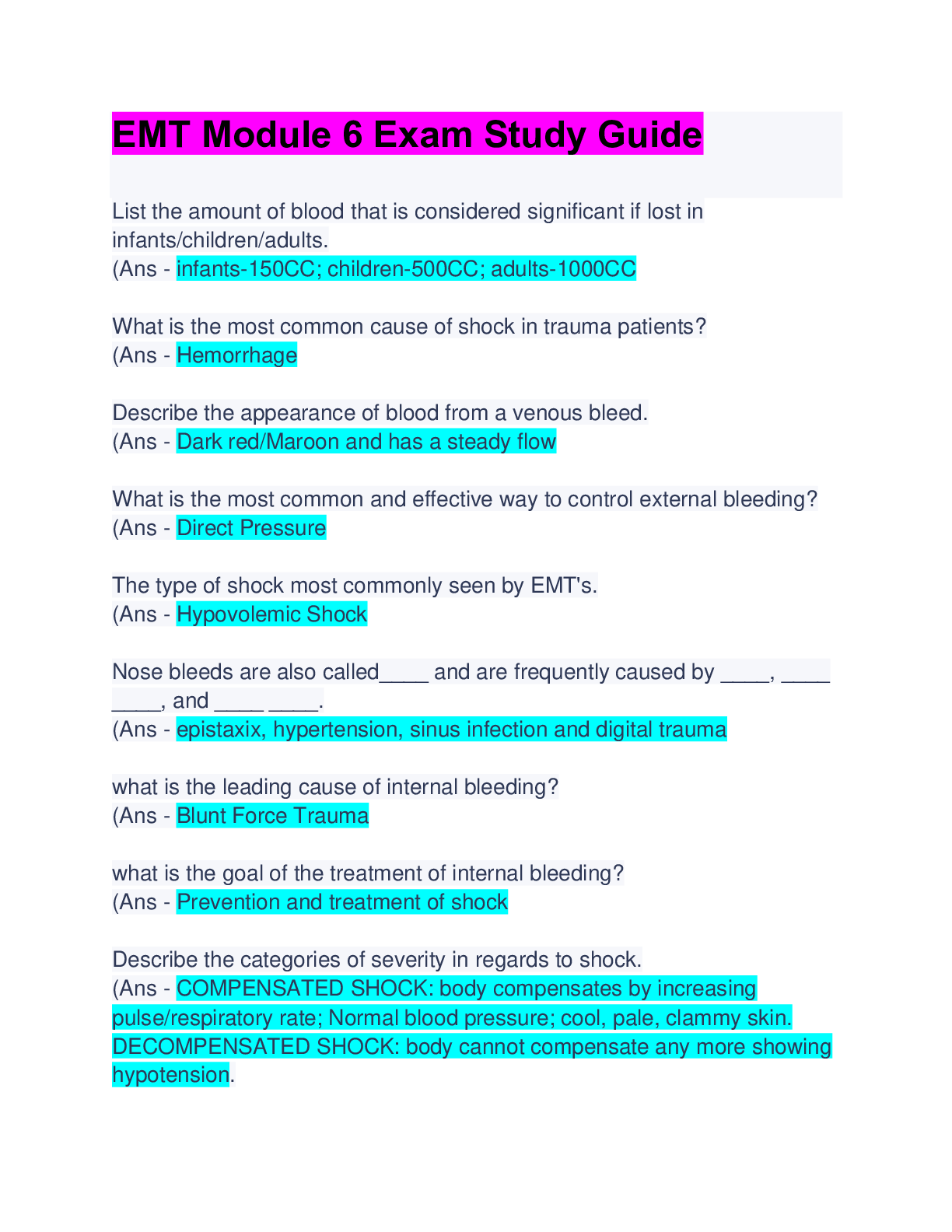
Buy this document to get the full access instantly
Instant Download Access after purchase
Add to cartInstant download
Reviews( 0 )
Document information
Connected school, study & course
About the document
Uploaded On
Jul 14, 2023
Number of pages
13
Written in
Additional information
This document has been written for:
Uploaded
Jul 14, 2023
Downloads
0
Views
60




